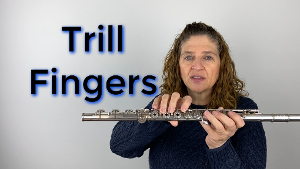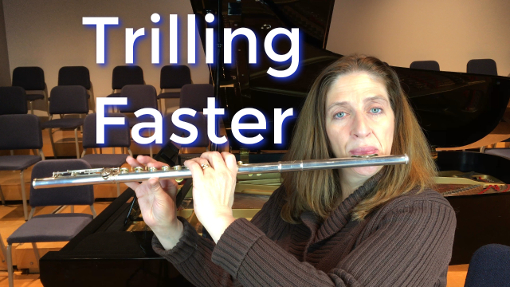We all want faster trills! I always felt that I needed to work on making my trills go faster because my fingers were not naturally fast. But how can we learn to trill faster when some of our fingers move faster than others?
Train All of Your Fingers to Move Faster
You can. You can train those muscles to move as fast as every other finger. Our fingers do move unequally. They have different strengths because of the different role they play in the hand. So, it’s our job to train those muscles to move equally. For example, while our first finger might be able to trill really fast, if we’re trilling our pinky from a D to an Eb, it’s often very uneven.
The best exercise that I have found is of course in the flute player’s Bible Taffanel & Gaubert 17 Grand Exercises for the Flute. If you have the book, turn to the last exercise in the book.
Taffanel & Gaubert
When looking at this exercise it looks somewhat frightening because of the amount of black on the page. Don’t be scared off! The way I work on these trill exercises is with a metronome at a slow speed. Set the metronome on 60 or slower if need be. Then take a look at the two notes you will be trilling between. The first set of trills is a D to an E. Now I don’t begin trilling right away. First I’ll make sure that I am rock solid with the tempo.
Since the written rhythm is measuring the trills, I will tongue the first note. In other words there are 4 Ds per beat. I tongue those 4 Ds for about 4 beats and then immediately move into the measured trill. This method helps me to hear that steady D and not let it get uneven when I begin the trill practice.
You must be listening to your trills with intention. Listen for every uneven movement between these two notes. Sometimes you can be very even for 6 beats. But then your trill starts to become uneven. Hang on to that evenness. Don’t allow this to happen. If it is really a problem then slow down the beat.
Breathe Wherever You Need To
Don’t worry about taking a breath in the middle of it. You’ll have to take a breath in the middle because you’re not going at some insane tempo at which you can get the whole line done in one breath.
Taffanel & Gaubert takes your trills all the way up. However, I wouldn’t do that many in one practice session. If you’re really working hard and concentrating, this exercise can be a bit on the tedious side and you’ll lose your concentration. So, I recommend not to work on too many in one practice session. Also I think it works best to work on that same group of trills for a number of days or even weeks in a row. Don’t play a different set everyday.
Keep Your Trill Practice Time Short
Eventually you will work your way all the way up, slowly making sure your fingers move at the same tempo. You’re training your muscles to get faster together. Go all the way up the T&G exercise. Then increase the tempo, keeping your fingers moving together, faster and faster.
That is the best way I know to get faster on your trills. A side benefit of working on your trills in this way is it works as a tone exercise as well if you work on not blowing too much air.
Have fun working on your trills!
DoctorFlute
Watch me demonstrate this: FluteTips 64 Trilling Faster


FluteTips 49 Every Trill Has its Own Finger

Improve Your Tone by NOT Playing with Too Much Air

